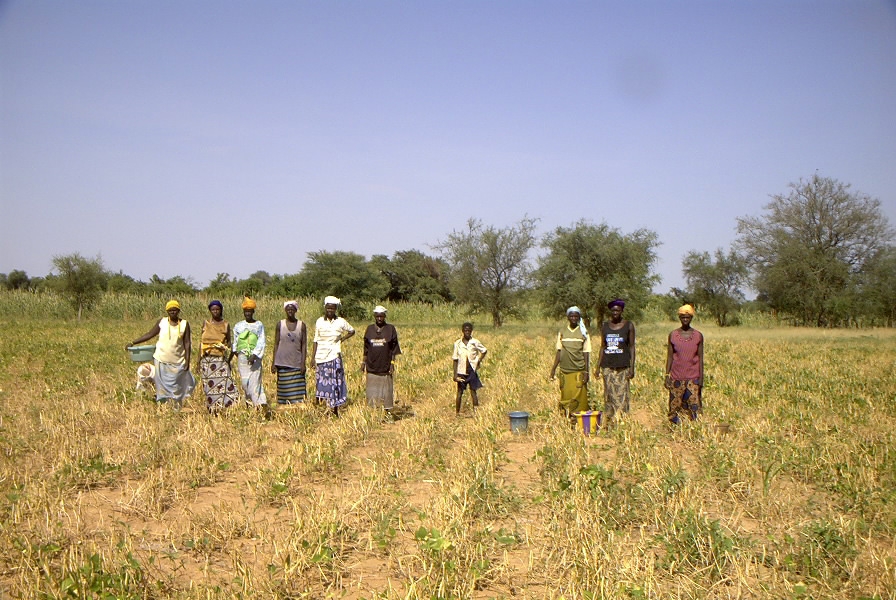Tackling a tricky topic: Drought phenotyping
- Wednesday, 30 January 2008 20:47
From 28–30 January 2008, GCP lived up to its middle name and organised a workshop on an intricate challenge—drought phenotyping. Held at GCP’s Headquarters at CIMMYT, the workshop brought together specialists from diverse disciplines such as crop physiologists, GIS specialists and model developers, to more effectively address the increasing phenotyping needs from genomic studies and breeding programmes, through an interdisciplinary lens.
Participants in the workshop were Gregory Edmeades (Consultant), Abraham Blum (Consultant), Glenn Hyman (CIAT), Sam Geerts (Gent University, Belgium), Robert Koebner (Consultant), Paul Brennan (Consultant), Reinaldo Gomide (EMBRAPA), John O’Toole (Consultant), Guy Davenport (CRIL-CIMMYT), Rosemary Shrestha (CRIL-CIMMYT), Eduardo Hernández (CRIL-CIMMYT), Humberto Gómez (Genotyping Support Service Coordinator, GCP), Jean-Marcel Ribaut (Director, GCP) and Philippe Monneveux (Subprogramme 3 Leader, GCP).
Participants discussed several options for tackling the complexity of drought phenotyping in GCP projects, mainly centering on:
- better characterisation of environmental conditions and capacities in experimental stations involved in GCP drought phenotyping, and selecting potential hubs, based on climatic representativeness and existing facilities and expertise (component 1)
- improving environmental characterisation, based on GIS, water balance models and their combination (component 2)
- improving phenotypic data collection by customising templates and improving data capture (component 3)
- Common activities were agreed upon by the participants who developed a workplan to be further refined and implemented over the months to follow.
Expected outputs from the actions proposed at the workshop include:
Component 1:
- Identify sites and develop a phenotyping network comprising 10–12 hubs (reliable and homogenous sites, and with the capacity for drought phenotyping of at least two crops). Sites will be identified through on-site visits to Latin America, South and Southeast Asia, and sub-Saharan Africa, along with a detailed list of their characteristics, suitability for specific crops, equipment and personnel needs.
- Identifying 3–8 candidate local phenotyping sites per crop, each hosted by a national research programme, as well as conducting commensurate needs assessments.
Component 2:
- Geographic and agro-climatic appraisals to support the selection of hub sites, including attributing information using spatial overlay analysis with geographic information system (GIS) software. Soil constraint mapping will also be conducted using tables, graphs, maps and software, and outputs disseminated through CDs to other teams working on establishing phenotyping networks
- Characterisation of selected hubs to ensure adequate representaiton and future field trial planning (map homologues using Homologue and CLIMEX software to identify environments similar to the site; characterisation of drought stress for the site using the soil water balance model Budget).
- Understanding relationships between test sites for improved deployment of GCP genotypes (measures of similarity and dissimilarity among locations, grouping of locations to support future decisions on deployment of GCP materials, calculation of drought stress indicators, establishment of broad area maps of water balance and detailed mapping of drought stress in GCP priority areas).
Component 3:
- Development and implementation of phenotyping templates to ensure that all the required information for projects is housed not only in the GCP Central Registry, but also in a database which will allow data set cross-searches for meta analyses and other comparative data mining.
- Production of a help manual as a companion to the phenotyping template to ensure that project partners are fully aware of expectations on phenotyping data before they embark on data collection.
- Compliance monitoring of data storage to ensure that data have been submitted in an acceptable and complete form.
- Development and implementation of electronic data capture technology (after understanding and documenting the availability of compatible hardware and software, and assuring a sufficient level of user computer literacy).
Energy levels at the end of the workshop were high, with several participants commenting that the event came as a welcomed opportunity to interact with colleagues and more easily exchange ideas on the complex issue of drought phenotyping. The outlook for the steps ahead and the future network was also positive, as captured by GIS specialist Glenn Hymann: “The phenotyping network and all the work that will be carried out in the network sites is where we will really see how the wonders of genetics and bioinformatics research play themselves out on the ground. So, in the coming years it well be exciting to see the results of GCP research in the crop plants”.
For further information on this workshop, please contact Subprogramme 3 Leader This email address is being protected from spambots. You need JavaScript enabled to view it. .



